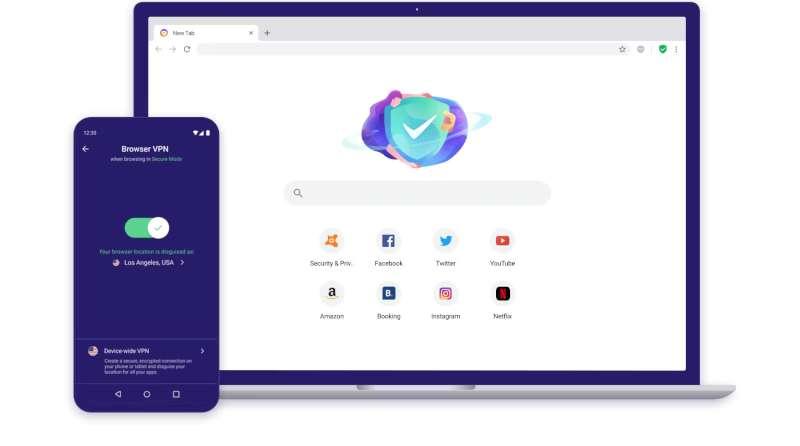How to download Microsoft Defender
Microsoft Defender (also known as Windows Defender) is a built-in security feature in Windows operating systems, starting with Windows 8 and continuing with Windows 10. It comes pre-installed and is automatically enabled on your Windows device. To ensure that Microsoft Defender is up to date and functioning properly, follow these steps: 1. Windows Updates: Keep your Windows operating system updated with the latest patches and updates. Microsoft regularly releases updates that include security improvements and enhancements to Microsoft Defender. 2. Verify Microsoft Defender is enabled: By default, Microsoft Defender is enabled on Windows systems. To check if it is enabled, go to the Start menu, type “Windows Security,” and open the Windows Security app. In the app, you can verify the status of Microsoft Defender and ensure that real-time protection is turned on.
3. Run a scan: You can manually run a scan with Microsoft Defender to check your system for any potential threats. Open the Windows Security app, go to the “Virus & Threat Protection” section, and click on the “Quick Scan” or “Full Scan” option.
To download Windows Security from the Microsoft Store:
1. Open the Microsoft Store app on your Windows device.
2. Search for “Windows Security” in the search bar.
3. Click on the “Windows Security” app in the search results.
4. Click the “Get” or “Install” button to download and install the app.
Please note that the specific steps may vary slightly depending on your version of Windows and the Microsoft Store app. If you encounter any difficulties or have further questions, I recommend referring to official Microsoft documentation or support channels for the most accurate and up-to-date instructions on downloading and using Microsoft Defender.
Microsoft Defender, formerly known as Windows Defender, is an antivirus program developed by Microsoft. It is included as a built-in security feature in Windows operating systems, starting with Windows 8 and continuing with Windows 10.
Microsoft Defender provides real-time protection against various types of malware, including viruses, ransomware, spyware, and other malicious software. It utilizes several layers of protection, including behavioral analysis, cloud-based protection, and machine learning algorithms to detect and block threats.
Some key features of Microsoft Defender include:
1. Real-time Protection: Microsoft Defender constantly monitors your system for any suspicious activities and scans files, downloads, and programs in real-time to detect and block threats.
2. Virus and Threat Scanning: You can perform manual scans of your system or schedule regular scans to check for malware infections. Microsoft Defender also provides options for custom scans, quick scans, and full scans.
3. Windows Firewall Integration: Microsoft Defender works in conjunction with the Windows Firewall to help protect your system from unauthorized access and network threats.
4. Browser Protection: Microsoft Defender includes browser extensions and features that help protect against phishing attempts, malicious websites, and other online threats while you browse the internet.
5. Controlled Folder Access: This feature adds an extra layer of protection by allowing you to specify certain folders on your system that should be protected from unauthorized changes by ransomware or other malicious software.
It’s worth noting that Microsoft frequently updates and improves Microsoft Defender to address new threats and provide better security. It’s generally recommended to keep your operating system up to date to ensure you have the latest security features and protection.
How to download Microsoft Defender Endpoint
To download Microsoft Defender for Endpoint, you need to have the appropriate licensing and access to Microsoft’s Endpoint Security portal. Here are the general steps to download Microsoft Defender for Endpoint:
1. Licensing and Access: Ensure that your organization has the appropriate licensing and access to Microsoft Defender for Endpoint. This typically involves having a Microsoft 365 E5, Microsoft 365 E5 Security, or Microsoft 365 Defender license.
2. Microsoft Endpoint Security Portal: Sign in to the Microsoft Endpoint Security portal (https://security.microsoft.com/) using your organizational account with the necessary permissions.
3. Access Microsoft Defender for Endpoint: In the portal, navigate to the Microsoft Defender for Endpoint section. This is where you can manage and download the required components.
4. Download Microsoft Defender for Endpoint: Within the Microsoft Defender for Endpoint section, locate the download link or instructions specific to your organization. It may involve downloading an installer or agent for deployment on your endpoints.
5. Deployment and Configuration: Follow the provided deployment and configuration instructions to install and set up Microsoft Defender for Endpoint on your organization’s endpoints. This typically involves deploying the agent to your devices, configuring policies, and integrating with your existing security infrastructure.
How to download Microsoft Defender Business
1. Licensing and Access: Ensure that your organization has the necessary licensing to use Microsoft Defender for Business. This typically involves having a Microsoft 365 Business Premium, Microsoft 365 E3, or Microsoft 365 E5 subscription.
2. Sign in to Microsoft 365 Security Center: Go to the Microsoft 365 Security Center (https://security.microsoft.com/) and sign in using your organizational account with the necessary permissions.
3. Access Microsoft Defender for Business: In the Microsoft 365 Security Center, navigate to the “Threat management” or “Security” section. Look for the Microsoft Defender for Business settings or dashboard.
4. Set Up Microsoft Defender for Business: Within the Microsoft Defender for Business settings or dashboard, you may find options to download and install the required components. Follow the provided instructions to set up Microsoft Defender for Business in your organization.
5. Configuration and Deployment: Once the installation is complete, you will typically need to configure and deploy Microsoft Defender for Business to your devices. This may involve applying policies, configuring security settings, and managing endpoints through the Microsoft 365 Security Center or other management tools provided by Microsoft.
How to download Microsoft Defender for Windows 10
Microsoft Defender Antivirus is a built-in security feature in Windows 10, and it is automatically included and enabled on Windows 10 devices. You do not need to download or install it separately.
By default, Windows 10 comes with Microsoft Defender Antivirus already installed. It provides real-time protection against viruses, malware, and other security threats. However, it’s important to keep your Windows 10 operating system up to date with the latest updates from Microsoft to ensure that you have the most current version of Microsoft Defender Antivirus.
To ensure Microsoft Defender Antivirus is enabled and up to date on your Windows 10 device:
1. Go to the Start menu and open the “Settings” app.
2. In the Settings app, click on “Update & Security.”
3. In the left-hand menu, select “Windows Security.”
4. In the Windows Security settings, you should see the status of Microsoft Defender Antivirus. It should indicate whether it is enabled and running.
5. Click on “Virus & threat protection” to access the antivirus settings.
6. In the Virus & threat protection settings, you can perform a quick scan, a full scan, or a custom scan of your system. You can also manage various other security settings related to Microsoft Defender Antivirus.
How to download Microsoft Defender for Mac
If you are part of an organization that has a Microsoft Defender ATP subscription and you want to download and install Microsoft Defender ATP for macOS, you can follow these steps:
1. Check Eligibility: Ensure that your organization has a valid Microsoft Defender ATP subscription that includes support for macOS.
2. Access Microsoft Defender Security Center: Sign in to the Microsoft Defender Security Center (https://securitycenter.windows.com/) using your organizational account with the necessary permissions.
3. Navigate to the “Endpoints” section: In the Microsoft Defender Security Center, go to the “Endpoints” section, and select “Mac” from the platforms menu.
4. Download the Microsoft Defender ATP installer: In the macOS section, locate the option to download the Microsoft Defender ATP installer for macOS. This may be available as an MSI file or a package file.
5. Install Microsoft Defender ATP: Run the downloaded installer and follow the on-screen instructions to install Microsoft Defender ATP on your macOS device. The installer will guide you through the necessary steps for installation and configuration.
How to download Microsoft Defender for free
To ensure that Microsoft Defender Antivirus is up to date and functioning properly, follow these steps:
1. Windows Updates: Keep your Windows operating system updated with the latest patches and updates. Microsoft regularly releases updates that include security improvements and enhancements to Microsoft Defender Antivirus.
2. Verify Microsoft Defender Antivirus is enabled: By default, Microsoft Defender Antivirus is enabled on Windows systems. To check if it is enabled, go to the Start menu, type “Windows Security,” and open the Windows Security app. In the app, you can verify the status of Microsoft Defender Antivirus and ensure that real-time protection is turned on.
3. Run a scan: You can manually run a scan with Microsoft Defender Antivirus to check your system for any potential threats. Open the Windows Security app, go to the “Virus & threat protection” section, and click on the “Quick scan” or “Full scan” option.
Please note that Microsoft Defender Antivirus is available for free on Windows devices, but it is not available as a standalone antivirus software for other operating systems like macOS or Linux.
If you are looking for a free antivirus solution for non-Windows operating systems, there are several reputable third-party antivirus software options available. These include Avast Free Antivirus, AVG AntiVirus Free, Avira Free Antivirus, and many others. You can visit their respective websites to download and install their free versions on your device.
How to download Microsoft Defender Antivirus
To ensure that Microsoft Defender Antivirus is up to date and functioning properly, follow these steps:
1. Windows Updates: Keep your Windows operating system updated with the latest patches and updates. Microsoft regularly releases updates that include security improvements and enhancements to Microsoft Defender Antivirus.
2. Verify Microsoft Defender Antivirus is enabled: By default, Microsoft Defender Antivirus is enabled on Windows systems. To check if it is enabled, go to the Start menu, type “Windows Security,” and open the Windows Security app. In the app, you can verify the status of Microsoft Defender Antivirus and ensure that real-time protection is turned on.
3. Run a scan: You can manually run a scan with Microsoft Defender Antivirus to check your system for any potential threats. Open the Windows Security app, go to the “Virus & threat protection” section, and click on the “Quick scan” or “Full scan” option.
Please note that Microsoft Defender Antivirus is available for free on Windows devices, and you don’t need to download it separately. It is automatically included and updated through Windows Update. If you are using an older version of Windows, you can consider upgrading to Windows 10 to benefit from the built-in Microsoft Defender Antivirus.











